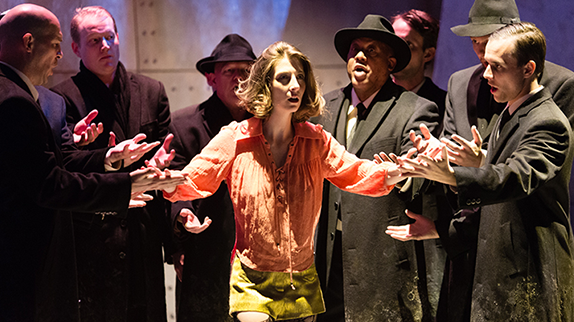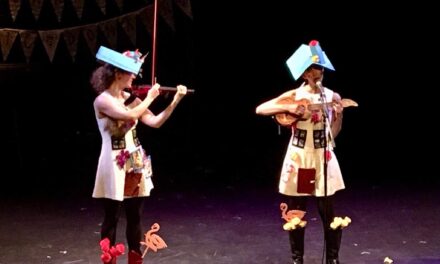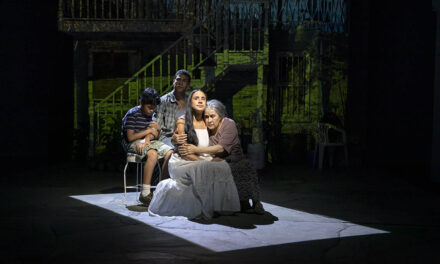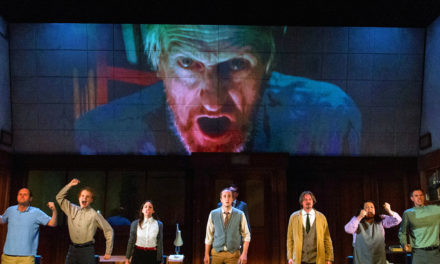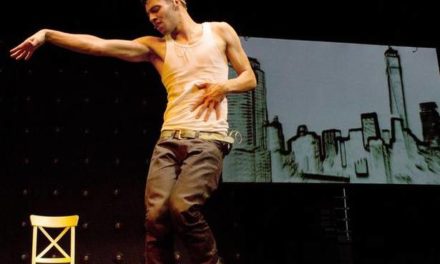Both postmodern tragedy and ageless love story, Lars von Trier’s 1996 film seemed inevitable operatic fodder. That the resulting work, presented as part of New York’s Prototype Festival, is compelling is a testament to its success as a stand-alone work.
What the creators of Breaking the Waves have achieved is to take the film’s source material, and make something wholly theatrical and stage worthy from a gritty film from indie cinema’s heyday. The story of two young lovers who endure a tragic accident has been extrapolated from the film and re-imagined for the stage with a sense of the earthiness of the original source material, most effectively in the dissonance of the score, which contrasts effectively with the stark lyrics. The libretto, by Royce Vavrek, is most effective in the latter two of three acts.
Composer Missy Mazzoli has created a work that succeeds because of its assured use of a range of motifs, from a male chorus to a sustained non musical passage in Act Three. It is such moments when Mazzoli’s seeming generosity of spirit creates a vista from which the audience can readily appreciate the achievements of her collaborators, including Director James Darrah. Darrah expertly integrates angular scenic design and evocative film projections into his ritualistic blocking (boldly wedging most of the action in the claustrophobic downstage right corner) a fitting evocation of the troubled mental state of the female lead.
The opening tableau features a baker’s dozen of black-clad men in muddied overcoats traversing the cantilevered wooden steps, a vibrant yet somber image that portends the overriding tragedy that is the trajectory of Breaking the Waves. It is precisely this tragedy that is the main artery of Mazzoli and Vavrek’s work. The singular emphasis on the heartbreak, at the heart of this story, is qualified by the opera’s emphasis on timeless, recurring themes of church and love that reverberate like oft-played notes in a score. Thanks to a solid cast of committed performers, this tale is neither relentless nor oppressive, but instead, is menacing and transcendent. Both Bess and Jan, the couple at the center of the story, are portrayed memorably by Kiera Duffy and John Moore, respectively. Their voices are, at turns, powerful and understated.
Eve Gigliotti, as Bess’s sister-in-law, is an astute supporting player, shining yet never upstaging Duffy’s tragic heroine. Dominic Armstrong, in the pivotal role of Dr. Richardson, best captures a sense of mastery of the material, bridging the chasm between the sweeping music and the vernacular lyrics. His scenes with Bess are likewise among the most memorable of the evening. His performance possesses a uniquely unwavering sense of purpose.
A performance’s merits rest on the synthesis of a roster of talents, and to that end, this production expertly showcases an important new work for the opera by highlighting its unblinking motifs of church and love, as rendered in a triumphant production. Breaking the Waves, January 6, 7, and 9 at NYU’s Skirball Center for the Performing Arts, New York City.
Jack Wernick is a playwright, stage director and educator.His work has been presented in New York by the New School for Drama, Naked Angels and the Tank. He has been published in HowlRound. He has a B.A. in Theatre from Antioch College.
This post was written by the author in their personal capacity.The opinions expressed in this article are the author’s own and do not reflect the view of The Theatre Times, their staff or collaborators.
This post was written by Jack Wernick.
The views expressed here belong to the author and do not necessarily reflect our views and opinions.

